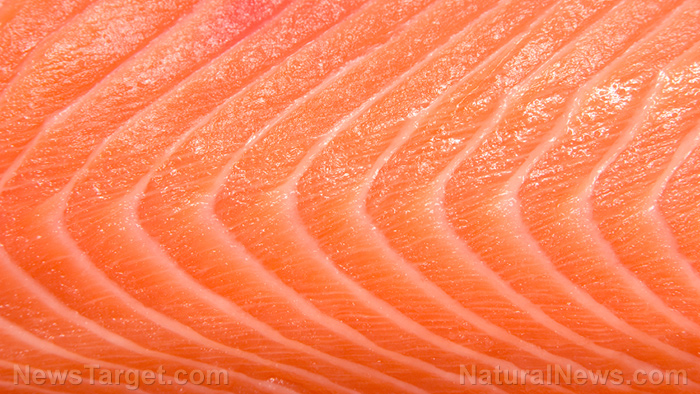
Many people are gravely concerned about the long-term health effects of these foods, while others are worried about the environmental effects of tinkering with nature in this way. Experts have raised concerns about the impact of GMO foods on biodiversity – the natural balance of animals and plants in the wild. And then there is the risk of genes from modified and unmodified plants “mixing” and leading to irreversible and uncontrollable consequences.
As bad as genetically modified plant crops might be, Frankenfoods just moved into a whole new realm of frightening: the first genetically modified animal – salmon – has been approved for human consumption by the Food and Drug Administration (FDA), and unlabeled GM fish could soon be featured on the menu of a restaurant near you. (Related: GM Foods: The U.S. Fights mandatory labeling in an untested human experiment.)
The dangerous history of GM foods
So-called experts insist that genetically modified foods like the new AquaBounty salmon recently approved by the FDA pose very little risk of health problems to humans. They claim that genetically modifying foods simply speeds up the process of breeding in desirable characteristics and removing undesirable ones from foods, as farmers have done for centuries.
The FDA has certainly come out fighting for the new GM salmon, but , as reported by HuffPost, that does not necessarily mean we can trust that eating this salmon will not be a risk.
One of the earliest genetically modified foods to hit the market was the Flavr Savr tomato. Over 40,000 agency memos later, released as a result of a lawsuit, prove that scientists repeatedly warned the FDA that GMOs like the Flavr Savr carried serious health risks. Their concerns were ignored, however, and the franken-tomato was allowed to reach the open market. Fortunately, it did not remain on the shelves for long.
HuffPost reported:
Calgene, the tomatoes’ creator-in-chief (now a part of Monsanto), voluntarily conducted three 28-day rat feeding studies. … Calgene tested two separate Flavr Savr tomato lines. Both had the same gene inserted into the same type of tomato. The process of insertion and the subsequent cloning of the cells into GM plants can cause lots of unique and unpredicted consequences. The two lines, therefore, were not considered identical. … The rats that ate one of these Flavr Savr varieties probably wished they were in a different test group. Out of 20 female rats, 7 developed stomach lesions—bleeding stomachs. The rats eating the other Flavr Savr, or the natural tomatoes, or no tomatoes at all, had no lesions.
Leading GMO safety expert, Dr. Arpad Pusztai, warned that if humans were to experience this type of hemorrhage it would be life-threatening, particularly in elderly patients who routinely take aspirin to prevent blood clots. (Related: GM foods becoming an ecological disaster, warns institute.)
From tomatoes to salmon … the nightmare continues
So, despite assurances from the FDA that Flavr Savr tomatoes were safe as houses, they were anything but, and were quickly removed from the market. Nonetheless, that same government agency now wants us to unquestioningly accept that AquaBounty’s fake salmon carries no health risks. If a tomato could prove to carry such serious risks, what terrifying results might be unleashed on humanity by the consumption of genetically modified animals like the AquaBounty salmon?
Discover the truth about GMO foods at Frankenfood.news.
Sources include:
Please contact us for more information.























